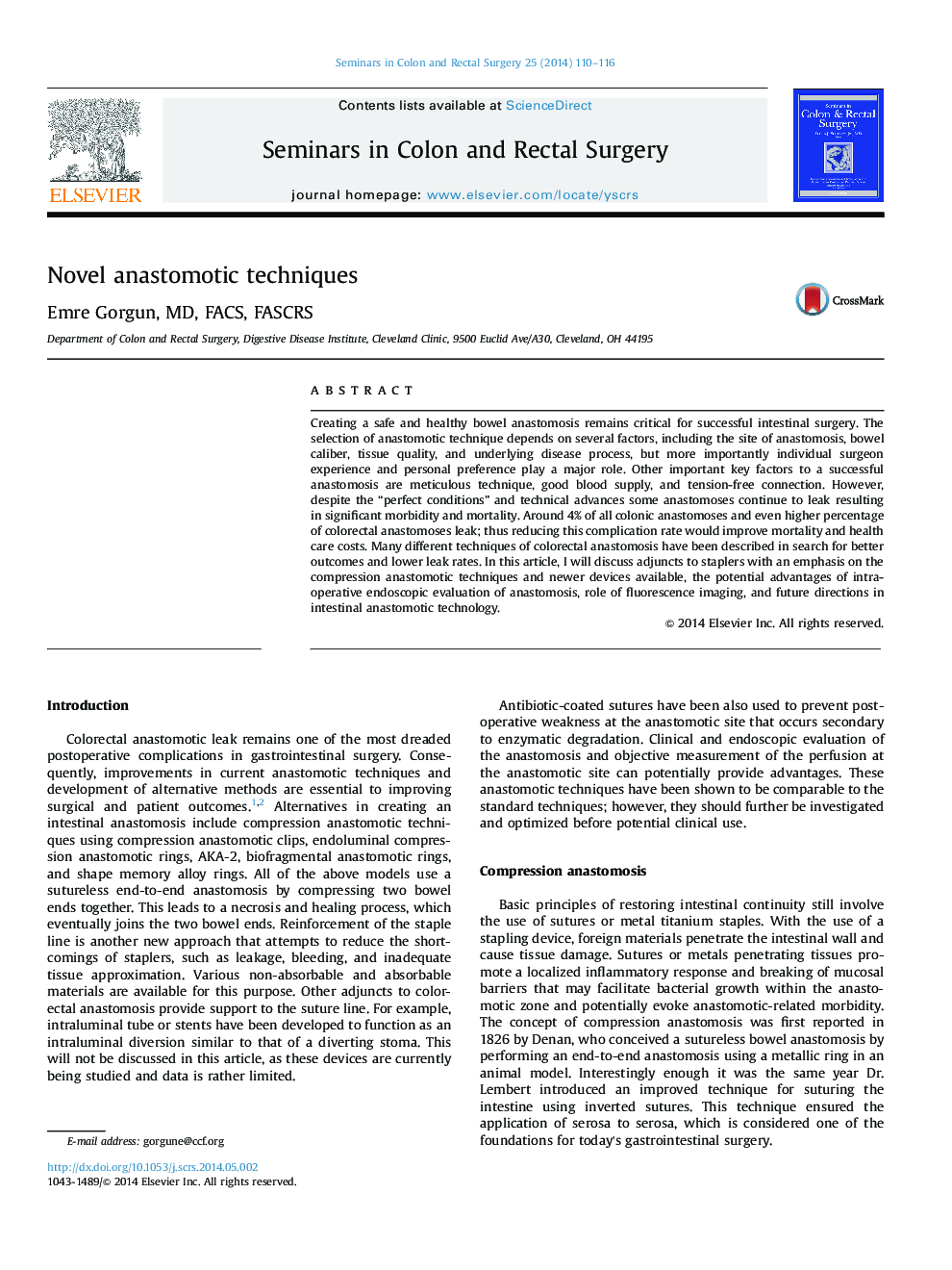| Article ID | Journal | Published Year | Pages | File Type |
|---|---|---|---|---|
| 3319366 | Seminars in Colon and Rectal Surgery | 2014 | 7 Pages |
Abstract
Creating a safe and healthy bowel anastomosis remains critical for successful intestinal surgery. The selection of anastomotic technique depends on several factors, including the site of anastomosis, bowel caliber, tissue quality, and underlying disease process, but more importantly individual surgeon experience and personal preference play a major role. Other important key factors to a successful anastomosis are meticulous technique, good blood supply, and tension-free connection. However, despite the “perfect conditions” and technical advances some anastomoses continue to leak resulting in significant morbidity and mortality. Around 4% of all colonic anastomoses and even higher percentage of colorectal anastomoses leak; thus reducing this complication rate would improve mortality and health care costs. Many different techniques of colorectal anastomosis have been described in search for better outcomes and lower leak rates. In this article, I will discuss adjuncts to staplers with an emphasis on the compression anastomotic techniques and newer devices available, the potential advantages of intraoperative endoscopic evaluation of anastomosis, role of fluorescence imaging, and future directions in intestinal anastomotic technology.
Related Topics
Health Sciences
Medicine and Dentistry
Gastroenterology
Authors
Emre MD, FACS, FASCRS,
